Echinacea is a resilient, long-lasting and very showy perennial.
There are five types of herbaceous plants called Echinacea. In floriculture, the most widespread is Echinacea purpurea - a tall perennial with basal leaves, an erect green stem and a height of more than a meter, with crimson or purple spots.
Echinacea grows well in the central regions of European Russia, and blooms well in the southern region, but only on a lower peduncle. It is planted in flower beds; large specimens look good
on the background green bushes, in groups on the lawn. In addition, this is a wonderful cut crop, which combines high decorativeness with long (up to two months) flowering.
Growing Echinacea from Seeds
There are two ways to grow echinacea from seeds:
- Planting seeds in open ground
- Growing through seedlings
Let's consider both of these options.
How to grow echinacea from seeds in open ground
Seeds are sown in the ground both in spring and autumn, but it must be taken into account that the seed shell is very hard and it takes quite a long time to soften it. This is why spring sowing is not always successful. The first shoots may appear in two weeks or six. Many gardeners stop watering their Echinacea plantings after 3-4 weeks, deciding that the seeds will no longer sprout.
But echinacea itself tells us when it’s best to plant it. Anyone who has been growing echinacea for more than one year knows well how easily it propagates by self-sowing. Seeds that fall from flowers in the fall produce abundant seedlings in the spring. Therefore, planting them in the ground is much easier and more expedient in late autumn, then in the spring you will get numerous shoots.
But in any case, in the first summer the plant will form only a rosette of leaves, and will bloom only the next year. To admire Echinacea flowers in the year of planting, you will have to grow it through seedlings.
Video about planting echinacea in late autumn:
Growing Echinacea through seedlings
Soil preparation. The easiest way is to buy ready-made soil at a flower shop, but since Echinacea is not a picky plant, you can prepare it yourself. No special soil composition is required, the main thing is that the soil is light, moisture-absorbing and breathable.
And it would not be superfluous to disinfect the soil, not only from your own production, but also from store-bought ones. To do this, keep the bag of soil in the cold for ten days or spill it with a solution of potassium permanganate.
Landing dates. Echinacea seeds begin to be sown in mid-February.
Seed preparation. Since the seed shell is hard, it is advisable to soak them in a solution that stimulates germination, or at least in plain water. To do this, wrap the seeds in a napkin, place them on a saucer and moisten the napkin regularly. Many people now use toilet paper for these purposes; paper is also good for this, the main thing is that the seeds are wet all the time and there is access to air.
Sowing seeds. When the seeds begin to hatch, it’s time to start sowing. Unfortunately, there will most likely not be friendly germination, so start planting when at least some of the seeds hatch.
To grow Echinacea seedlings, wooden boxes, all kinds of bowls or cups are used. Make grooves or depressions 5-10 mm deep in the ground, place the seeds in them and sprinkle with a thin layer of earth or sand. Moisten the soil with a spray bottle, cover the box with film and place it in a bright place.
Temperature for germination. Echinacea seeds germinate at a temperature of 13 - 15 degrees, but room temperature is also quite comfortable for them.
Caring for seedlings. Care consists only of moistening the soil in the seedling box and, of course, do not forget to remove the film when shoots appear.
Watch an educational video about growing echinacea from seeds:
Planting Echinacea in the ground
When to plant. Like most flowers, Echinacea is planted in the garden when the threat of frost has passed, usually in late May.
Landing place. Echinacea is recommended to be planted in the sun, but based on my own experience, I can say that it feels great in partial shade. Even in partial shade, the color of flowers is richer and brighter. Of course, these flowers cannot be planted in the shade; there the flowers will be small and may even disappear.
The soil. Echinacea can grow in almost any soil. If the soil is very sandy, then add a little good soil or humus when planting.
Planting Echinacea. The grown seedlings are planted in flowerbeds at a distance of 30 cm, the holes are not deep, 10 - 15 cm. If you bought already grown plants, then larger planting holes are prepared, focusing on the size of the roots. After planting, water the seedlings and mulch the soil.
Planting Echinacea in the ground, video:
Caring for Echinacea
Echinacea attracts attention with its exquisite appearance and its medicinal properties, but this plant has one more important advantage - echinacea is easy to grow, its care is minimal. This unpretentious flower easily tolerates drought, temperature changes and other vagaries of nature.
Watering. Watering is required regular and moderate.
Feeding. On rich soils it can grow without fertilizing. On poor soils, feed in the spring with nitrogen fertilizers (urea, saltpeter, mullein), and before flowering with potassium-phosphorus fertilizers (superphosphate, any complex fertilizer)
If you grow echinacea for medicinal purposes, then any fertilizing with mineral fertilizers should be excluded!
Trimming. To encourage flowering, remove spent flowers.
Dividing the bush. Echinacea can grow in one place for no more than 4 - 5 years. After this period, the bush must be dug up, divided into several parts and planted. Echinacea reproduces in the same way.
Preparing for winter. In autumn, the entire above-ground part of the plant must be cut back to the ground. Echinacea tolerates winter cold well, but nevertheless, it would not be a bad idea to hill up and cover the root zone with mulch.
Echinacea in the garden, video:
How to collect seeds
If you want to grow this majestic flower in your garden, you can collect the seeds and grow Echinacea from your own seeds the following year.
To do this, select a well-ripened head and cut it off along with part of the stem. Then wrap the head in a cloth bag or paper bag to collect the crumbled seeds. Hang the cut stem upside down. Collect all the seeds that have fallen into the bag and dry on paper for another 10-15 days. Then pour them into a glass jar and put it in the refrigerator. The seeds can be stored there for a whole year.
It is believed that seeds can only be collected from ordinary varieties of Echinacea, and terry varieties reproduce only vegetatively. This is not entirely true. From some varieties of terry echinacea, it is sometimes possible to collect seeds and grow flowers exactly like their parents, but only in the first generation. So don't be afraid to experiment.
Diseases and pests
Echinacea is a disease and pest resistant plant.If any problems appear, they are usually associated with improper care.
With high soil moisture, Echinacea can be affected by viral or fungal diseases caused by spores of the genus Cercospora and Septoria. The disease manifests itself in the form of spots on the leaves and leads to weakening and even death of plants.
When growing Echinacea, it is important not to over-moisten the soil; it is excess moisture that leads to the development of diseases and also attracts insect pests. But this does not always depend on the person - summer can be cold and rainy, which will cause the appearance of powdery mildew. This disease must be dealt with in the same way as with other similar diseases - remove infected parts of plants, monitor soil moisture, and treat the area with insecticides.
Pests of Echinacea are slugs, bedbugs and slobbering pennies.
Beneficial properties of Echinacea:
Echinacea varieties
Be sure to plant this miracle in your garden!
Author of the article: T.N. Serova florist
Similar articles:
- Growing garden balsam
- Planting and caring for weigela, one of the most beautiful garden shrubs.
- Growing azarina from seeds. How to use azarina to decorate the garden + photo.
- How to grow roses from a given bouquet summer, autumn and winter.
- Roses in autumn. Autumn planting, replanting, pruning and propagation of roses
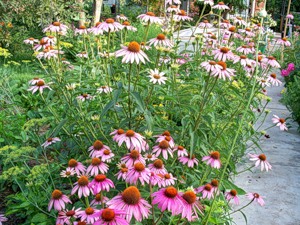
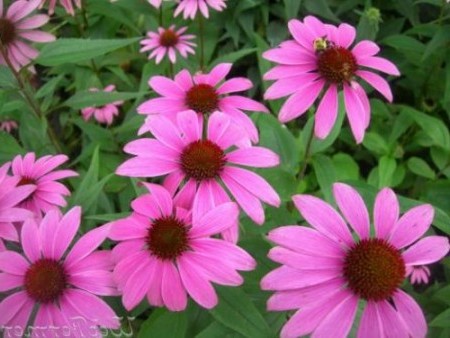
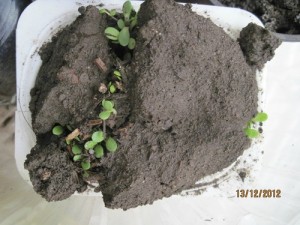
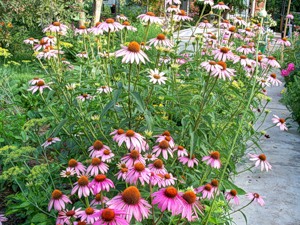
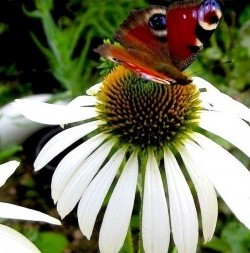
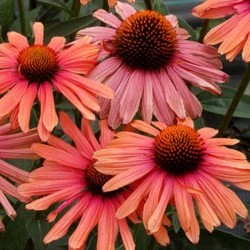
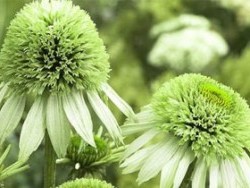
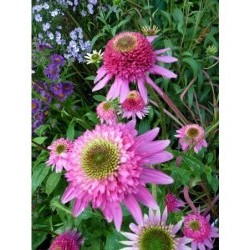
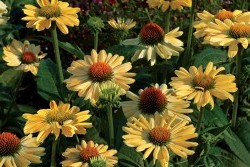
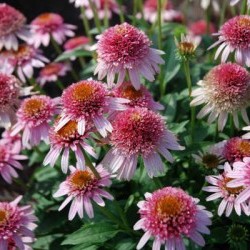
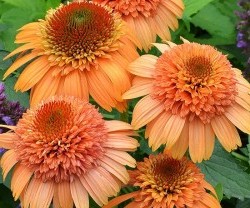
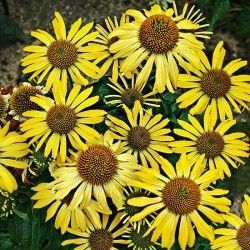
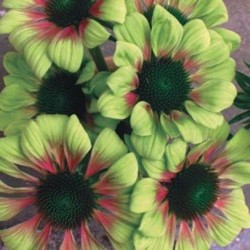
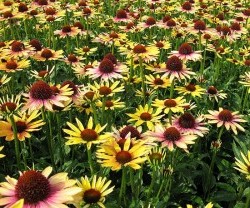

 (11 ratings, average: 4,45 out of 5)
(11 ratings, average: 4,45 out of 5) CUCUMBERS NEVER GET SICK, I'VE BEEN USING ONLY THIS FOR 40 YEARS! I SHARE A SECRET WITH YOU, CUCUMBERS ARE LIKE THE PICTURE!
CUCUMBERS NEVER GET SICK, I'VE BEEN USING ONLY THIS FOR 40 YEARS! I SHARE A SECRET WITH YOU, CUCUMBERS ARE LIKE THE PICTURE! You can dig a bucket of potatoes from each bush. Do you think these are fairy tales? Watch the video
You can dig a bucket of potatoes from each bush. Do you think these are fairy tales? Watch the video
 How our fellow gardeners work in Korea. There is a lot to learn and just fun to watch.
How our fellow gardeners work in Korea. There is a lot to learn and just fun to watch. Eye trainer. The author claims that with daily viewing, vision is restored.They don't charge money for views.
Eye trainer. The author claims that with daily viewing, vision is restored.They don't charge money for views. A 3-ingredient cake recipe in 30 minutes is better than Napoleon. Simple and very tasty.
A 3-ingredient cake recipe in 30 minutes is better than Napoleon. Simple and very tasty. Therapeutic exercises for cervical osteochondrosis. A complete set of exercises.
Therapeutic exercises for cervical osteochondrosis. A complete set of exercises. Which indoor plants match your zodiac sign?
Which indoor plants match your zodiac sign? What about them? Excursion to German dachas.
What about them? Excursion to German dachas.
Wholesale sale of echinacea
Growing Echinacea Together
Echinacea consultations
Thanks for the article, very interesting and informative! I'll go plant some echinacea seedlings!
A beautiful plant, we also grow it in the garden